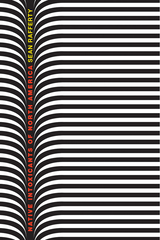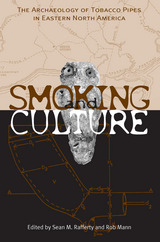
Though scholarship on intoxicants in regions like Asia, Africa, Mesoamerica, and South America is plentiful, Native Intoxicants of North America represents the first foray into a study of prehistoric intoxicants throughout North America specifically. In this study, Sean Rafferty fills significant gaps in existing research with a focus on native cultures of North America and holistic coverage of intoxicants by type. Importantly, Rafferty anchors his investigation in an easily overlooked question: why did early humans use intoxicants in the first place?
Rafferty begins by discussing the origins of intoxicants and their role in rituals, medicine, and recreation. Subsequent chapters turn to specific intoxicants—hallucinogens, stimulants, alcohol, and tobacco—making ample use of illustrations across disciplines, weaving a tapestry of culture, ritual, medicine, botany, artifact, and history. All the while, Rafferty explores the societal significance of narcotics, stimulants, and hallucinogens on prehistoric North American cultures.
While Native Intoxicants of North America focuses specifically on Native cultures, the author’s analysis provides the foundation for a valuable broader discussion: that in a world where few human behaviors are universal, experiencing altered states of consciousness is one that transcends culture and time.

Pipes lend themselves to anthropological as well as archaeological analysis in part because they are more ceremonial than utilitarian. Thus, while their styles and provenance can reveal something about trade relationships, cultural transfer, and aesthetic influences, they also provide important information about the nature of ritual in a particular society. As the contributors demonstrate, pipes offer a window through which to view the symbolic, ideological, and political roles that smoking has played in North American societies from prehistoric times to the nineteenth century.
The eleven essays included range widely over time and region, beginning with a case study of pipes and mortuary practices in the Ohio Valley during the Early Woodland Period. Subsequent chapters examine stone pipes from coastal North Carolina during the Late Woodland Period and the role pipes played in interregional interaction among protohistoric Native American groups in the Midwest and Northeast. Other essays explore the variety of cultural and political uses of pipes during the period of European contact. The final section of the book focuses on smoking in Euro-American contexts of the seventeenth through nineteenth centuries.
The innovative interpretive approaches taken by the contributors and the broad historical perspective will make The Culture of Smoking a model for examining other categories of material culture, and the volume will be welcomed by anthropologists and historians as well as archaeologists.
Sean M. Rafferty is associate professor of anthropology at the University at Albany, State University of New York.
Rob Mann is the southeast regional archaeologist for Louisiana and is based in the Museum of Natural Science at Louisiana State University.
READERS
Browse our collection.
PUBLISHERS
See BiblioVault's publisher services.
STUDENT SERVICES
Files for college accessibility offices.
UChicago Accessibility Resources
home | accessibility | search | about | contact us
BiblioVault ® 2001 - 2024
The University of Chicago Press









